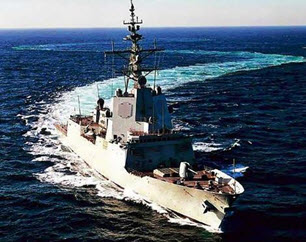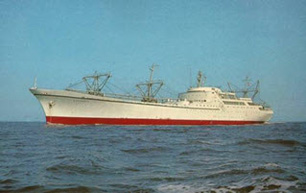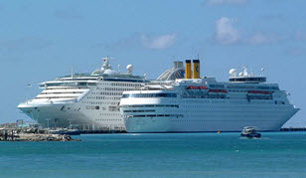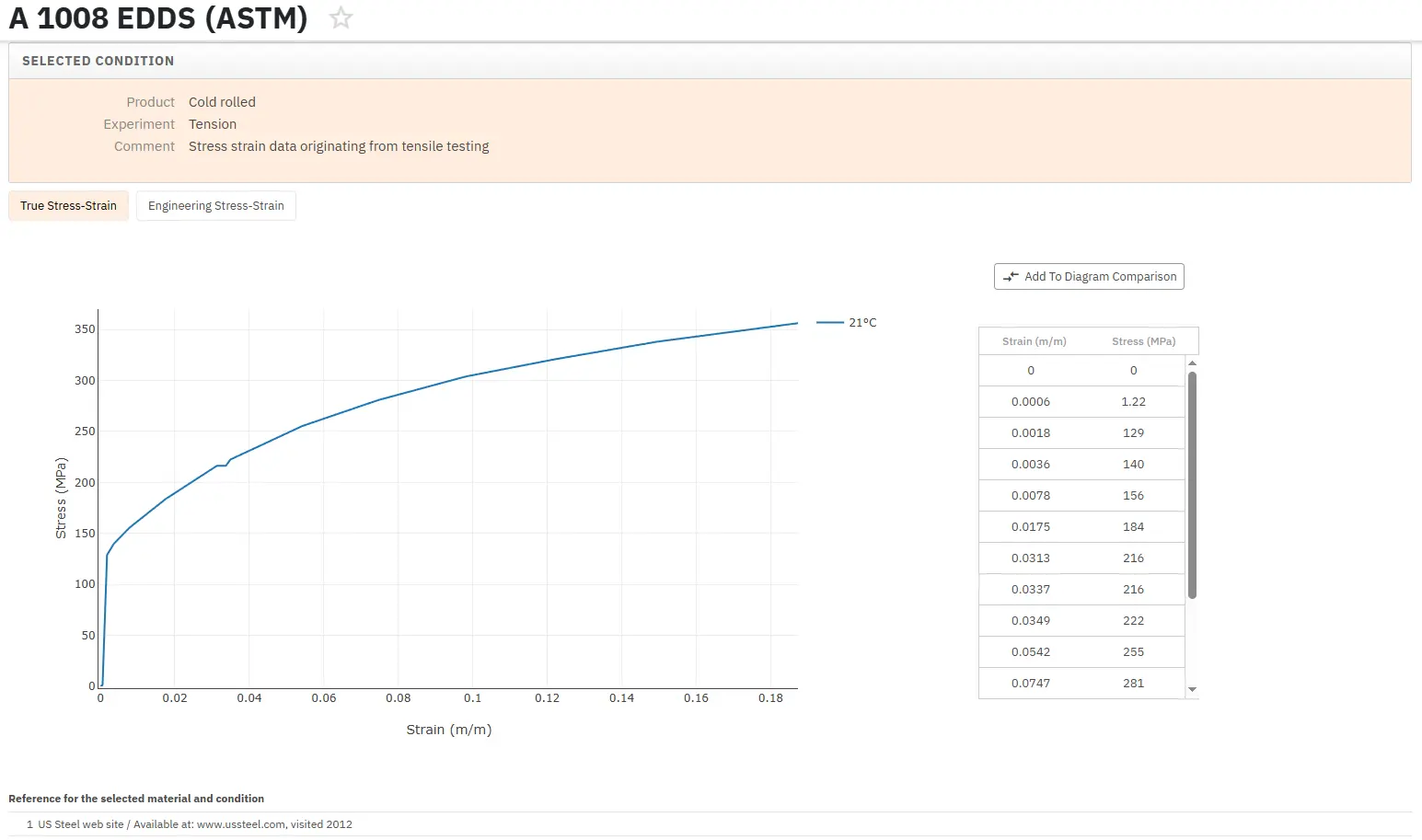Shipbuilding Steels: Part One
Abstract
Modern shipbuilding steels have evolved significantly through thermomechanical controlled processing (TMCP) technology to meet demanding marine construction requirements. TMCP high-strength steels eliminate preheating needs for welding, reduce welding man-hours, and improve fabricated part quality while maintaining exceptional strength, toughness, and weldability. These advanced steels enable construction of large container ships and oil tankers with reduced plate thickness, lighter structural weight, and enhanced load capacity. Recent developments include EH36, EH40, and EH47 grade steel plates incorporating boron, copper, and nickel alloying elements. Classification societies have established specific guidelines for laser welding applications, requiring stringent control of carbon, sulfur, and phosphorus content. The integration of TMCP technology with innovative rolling and cooling processes has revolutionized shipbuilding efficiency, environmental protection, and structural durability in modern marine applications.
Introduction to Modern Shipbuilding Steel Requirements
The shipbuilding industry has witnessed remarkable transformation in steel technology driven by increasing demands for efficiency, safety, and environmental protection. Contemporary shipbuilding requirements encompass reduction in welding man-hours, shortening of welding lines, elimination of cutting steps, stabilization of fabricated part quality, and reduction in control costs. These demanding specifications have been successfully addressed through the development of thermomechanical controlled processing (TMCP) high-strength steels that require no preheating for welding, irregular-section plates with close dimensional tolerances, and enhanced pre-shipment plate quality control protocols.
The quality of shipbuilding steels exerts an extremely significant impact on the overall quality, efficiency, and cost of ships constructed from these materials. Consequently, numerous steel producers have established comprehensive systems to supply wide and long plates specifically tailored to shipbuilding industry requirements.
Thermomechanical Controlled Processing (TMCP) Technology
Advanced Steel Processing Techniques
The growing demand for heavy thick plates with superior combinations of high strength, toughness, and weldability for large container ship construction has driven the development of extra high-strength thermomechanically processed steels. TMCP technology represents a revolutionary advancement that creates more user-friendly steel products compared to traditional manufacturing approaches.
The excellent handling properties of TMCP steels result from specialized thermomechanical treatment that significantly reduces the need for excessive alloying elements to achieve desired strength characteristics. TMCP plates undergo thermomechanically controlled rolling processes, and for greater plate thicknesses, accelerated cooling treatments are applied following the rolling operations.
TMCP Steel Product Categories and Applications
TMCP steels are typically supplied in three primary configurations: heavy plates, surface-treated plates, and specialized plate components. The exceptionally low carbon equivalent values of TMCP steels enable easy welding using all common welding processes. Additionally, these advanced materials demonstrate excellent formability, bendability, and edge-working characteristics that facilitate efficient fabrication operations.
TMCP steels provide numerous economic advantages to shipbuilders, including reduced plate thickness requirements, significant weight savings in final structural configurations, increased effective load capacities during operational service, and substantial cost reductions in welding and fabrication processes.
Advanced Grade Development: EH36, EH40, and EH47 Steels
The successful implementation of thermomechanical control processes combined with innovative technology has facilitated the development of specialized EH36, EH40, and EH47 grade steel plates. These advanced grades incorporate carefully controlled alloying elements including boron, copper, and nickel, while employing precisely controlled rolling and cooling processes to simultaneously improve strength and toughness characteristics.
EH36 steel plates designed for high heat input welding applications have been successfully developed with exceptional toughness in the heat-affected zone (HAZ). This achievement results from increased thermal stability of titanium nitride (TiN) particles at elevated temperatures, ensuring consistent performance during demanding welding operations.
Table 1. Steel for Ship Building with classification society standards
| Lloyds | Norske Veritas |
Germanischer Lloyds |
Bureau Veritas |
American Bureau of Shipping |
USSR Register |
Nippon Kaigi Kyoka |
| A | A | A | A | A | A | A |
| B | B | B | B | B | B | B |
| D | D | D | D | SS | D | D |
| CD/DS | ||||||
| NV A27S | ||||||
| NV D27S | ||||||
| AH 32 | NV A32 | A 32 | AH 32 | AH 32 | A 32 | |
| DH 32 | NV 32 | D 32 | DH 32 | DH 32 | D 32 | |
| EH 32 | NV E32 | E 32 | EH 32 | EH 32 | E 32 | |
| AH 34S | ||||||
| DH 34S | ||||||
| EH 34S | ||||||
| AH 35 | NV A36 | A 36 | AH 36 | AH 36 | A 36 | |
| DH 36 | NV D36 | D 36 | DH 36 | DH 36 | D 36 | |
| EH 36 | NV E36 | E 36 | EH 36 | EH 36 | E 36 | |
| NV A40 | ||||||
| NV D40 | ||||||
| NV E40 | ||||||
| NV A420 | ||||||
| NV D420 | ||||||
| NV E420 |
Classification Standards and International Specifications
The international shipbuilding industry operates under stringent classification society standards that ensure consistent quality and performance across different manufacturing regions. Major classification societies including Lloyd's Register, Norske Veritas, Germanischer Lloyd, Bureau Veritas, American Bureau of Shipping, USSR Register, and Nippon Kaigi Kyokai have established comprehensive steel grade specifications ranging from basic A, B, and D grades to advanced high-strength variants including AH32, DH32, EH32, AH36, DH36, and EH36 designations.
These standardized specifications ensure global interoperability and consistent performance expectations for shipbuilding steels across different maritime applications and geographic regions.
Modern Steel Applications in Marine Construction
Structural Steel Plate Applications
Shipbuilding traditionally relies on structural steel plates for fabricating ship hulls, with modern steel plates demonstrating significantly higher tensile strengths compared to their predecessors. These enhanced strength characteristics make contemporary steels exceptionally well-suited for efficient construction of large container ships and specialized marine vessels.
Specialized plate configurations are available with designed-in corrosion resistance properties, making them ideal for constructing oil tankers and similar vessels exposed to harsh marine environments. These advanced steels enable construction of substantially lighter vessels compared to previous generations, or alternatively, larger capacity vessels for equivalent weight specifications, offering significant opportunities for fuel consumption reduction and corresponding CO2 emission decreases.



Figure 1: Ships: Navy, Cargo and Cruise
Multi-Industry Applications
The advanced steels developed for shipbuilding applications have found extensive use across numerous related industries. Offshore oil platforms, bridge construction, civil engineering projects, construction machinery, railway carriages, storage tanks, pressure vessels, and nuclear, thermal, and hydroelectric power plants all benefit from the superior attributes of modern shipbuilding-grade steels.
Safety, Environmental Protection, and Innovative Developments
Corrosion-Resistant Steel Development
Recent years have witnessed increased attention to ship safety, durability, and marine environment protection, leading to the development of innovative structural steel plates. Significant advancement has occurred in developing corrosion-resistant plates specifically for double-hull tanker construction. Crude oil carriers now require double-hull configurations to prevent oil spills, and increased temperatures in oil tanks with double-hull structures elevate the likelihood of corrosion in upper deck steel plates exposed to vapor spaces within the tanks.
To prevent corrosion and extend ship service life, various corrosion-resistant steel plate formulations have been developed, incorporating specialized alloying elements and surface treatments that provide enhanced resistance to marine environmental conditions.
Construction Efficiency Improvements
Steel plate development has also focused on increasing construction efficiency while simultaneously decreasing construction costs. Longitudinally profiled (LP) steel plates represent a significant innovation in this context. Thickness variation within individual plates is achieved through controlled rolling processes, enabling replacement of assemblies that previously required welding steel plates of different thicknesses, thereby reducing welding time and associated costs.
Residual Stress Management
Another important development concerns residual stress retention in steel plates. TMCP steel plates are prone to possessing residual stresses from their production processes, often resulting in distortion following cutting and welding operations. To achieve residual stress-reduced steel plates, temperature differences across large surface areas in wide and long plates and through thickness dimensions must be minimized. Cold leveling techniques are also employed to reduce inhomogeneous stress patterns and ensure accurate block shape dimensions.
Advanced Welding Technologies and Laser Applications
Laser Welding Developments
Numerous research projects are currently being conducted at European and national levels to improve laser and optical technology applications in shipbuilding. In laser beam welding applications, centerline solidification cracks in fused zones present challenges that can limit travel speeds and overall productivity.
Fused zones typically exhibit the same composition as the base steel being welded, and while several welding procedural factors can minimize cracking risks, the fundamental issue relates to steel composition. Consequently, lower sulfur and phosphorus levels may be required for optimal laser welding performance.
Table 2. Classification society guidelines for laser welding of ship hull
| C 0.12% max | (lower speeds ≤ 0.15%) |
| S 0.005% max | (≤ 0.010% for ≤ 12 mm, 0.6 m/min) |
| P 0.010% max | (≤ 0.015% for ≤ 12 mm, 0.6 m/min) |
| CE 0.38% max | |
| Weld hardness ≤ 380 HV5 max | (≤ 400 HV5 isolated) |
Chemical Composition Requirements for Laser Welding
Classification societies have established specific guidelines for laser welding of ship hull applications, requiring maximum carbon content of 0.12% (with lower speeds requiring ≤0.15%), sulfur content of 0.005% maximum (≤0.010% for plates ≤12mm at 0.6 m/min), phosphorus content of 0.010% maximum (≤0.015% for plates ≤12mm at 0.6 m/min), carbon equivalent of 0.38% maximum, and weld hardness not exceeding 380 HV5 maximum (≤400 HV5 for isolated measurements).
Future Trends and Technological Advancement
The continued evolution of shipbuilding steels focuses on integrating advanced metallurgical principles with innovative processing technologies to meet increasingly stringent performance requirements. Future developments will likely emphasize enhanced environmental compatibility, improved energy efficiency during production, and superior performance characteristics that enable construction of larger, more efficient vessels while maintaining structural integrity and safety standards.
The integration of artificial intelligence and advanced process control systems in steel production will enable more precise control over mechanical properties, chemical composition, and dimensional accuracy, further enhancing the capabilities of TMCP technology in modern shipbuilding applications.
Czytaj więcej
Uzyskaj dostęp do precyzyjnych właściwości stali konstrukcyjnych już teraz!
Total Materia Horizon zawiera informacje o właściwościach dla ponad 150 000 stali konstrukcyjnych: skład, właściwości mechaniczne i fizyczne, właściwości nieliniowe i wiele więcej.

Uzyskaj BEZPŁATNE konto testowe w Total Materia Horizon i dołącz do społeczności ponad 500 000 użytkowników z ponad 120 krajów.